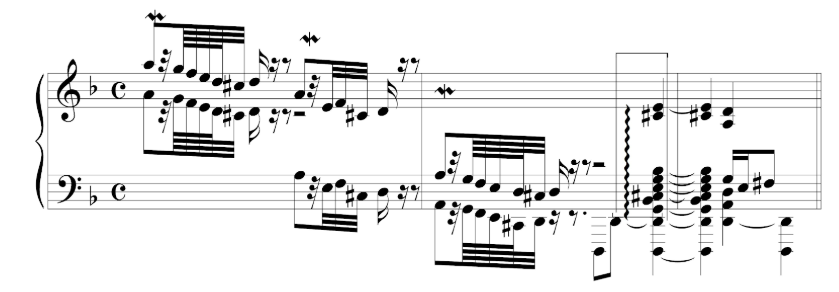Integrated Aural Skills 2019-20
Ear Training - How Seventh Chords Work
Introduction to Seventh Chords
In this class, we will study five types of seventh chords.
Please play these chords on the piano and sing up and down the tones using solfege. What are the commonalities and differences between them?
The table below explains the characteristics, harmonic function, and solfege of each of the seventh chords. Please commit this table to memory.

| Chord Name | double diminished (fully diminished) 7 | half diminished (diminished minor) 7 | minor-minor 7 | major-minor 7 | major-major 7 |
|---|---|---|---|---|---|
| Symbol | dd 7 | dm 7 | mm 7 | Mm 7 | MM 7 |
| Intervallic Structure of the Chord | diminished triad + minor third OR three stacked minor 3rds | diminished triad + major 3rd | minor triad + minor 3rd | major triad + minor 3rd | major triad + major 3rd |
| Common Harmonic Function | vii07 in minor keys | iiØ7 in minor keys OR viiØ7 in major keys | ii7 OR vi7 in major keys | V7 in major AND minor keys | rare in classical music; commoner in jazz and pop |
| Solfege | ti re fa le | re fa le do OR ti re fa la | re fa la do OR la do mi sol | sol ti re fa | do mi sol ti |
Seventh Chords in Melodic and Harmonic Contexts
One tip for the easy recognition of seventh chords is to look for them in the context of well-known pieces of music. Once you start listening for them, they are not hard to find.
dd7 is often used in movie soundtracks at suspenseful moments. It is heard clearly in mm. 2-3 of J. S. Bach’s famous Toccata and Fugue in D Minor.
dm7 is found in many diatonic compositions. The most famous example of it occurs in Richard Wagner’s Tristan und Isolde, and is usually referred to as the “Tristan chord.” In this instance, the chord doesn’t resolve, setting up the theme of tragedy and unresolved yearning that characterizes the entire opera.
mm7 has a less tragic, more easygoing quality than dm7. This is because we typically find it in major keys, either as ii7 or vi7. It appears memorably as vi7 in Debussy’s piano piece La fille aux cheveux de lin (“The Girl With the Flaxen Hair”).
Mm7 is present everywhere in Classical music as the dominant seventh chord. Functionally, it has a strong pull towards resolution. Here is an example of how it appears in the first movement of Beethoven’s Piano Sonata in C Major, Op. 2, No. 3.
MM7 is rarer in Classical music, but relatively common in jazz and pop. In this pop song from the 1950s, “Mr. Sandman” by Pat Ballard, MM7 is outlined in the first measure of the introduction. You can see some other types of seventh chords here too.
We can also find it in some classical repertoire, including this example from the first of Erik Satie’s Gymnopédies. The opening features two different MM7 chords. One has D as its root (do-mi-sol-ti) and the other has G (fa-la-do-mi, a less usual presentation).

Study, play, and sing the seventh chords until you can differentiate between them with ease. You can listen to them on this week’s Spotify playlist, “UI Aural Skills III Seventh Chords” by user “mirandawilson.”**




